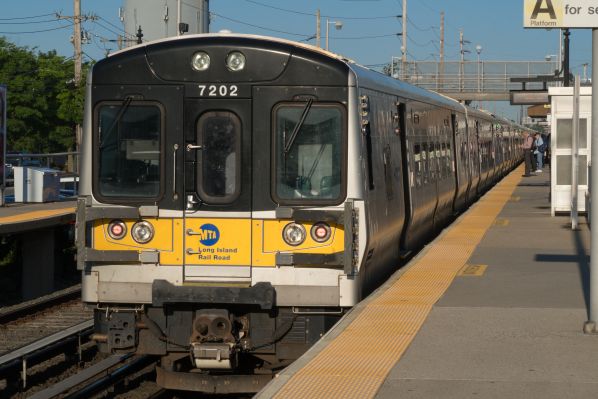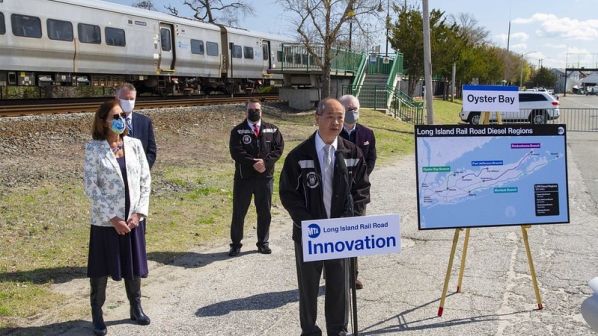METROPOLITAN Transportation Authority’s (MTA) Long Island Rail Road (LIRR) is set to work with Alstom to test a prototype battery EMU on the 20.9km Oyster Bay branch between Mineola and Oyster Bay, the first such trial on commuter rolling stock in North America.
LIRR president, Mr Philip Eng, announced the trial on April 19. The prototype BEMU will be a two-car Bombardier M7 with four of the train’s eight traction motors (one per axle), which normally draw power from 750V dc third rail, retrofitted with battery propulsion.
LIRR entered discussions with Bombardier on the project prior to Alstom’s acquisition of Bombardier on January 29. The $US 850,000 programme is now an LIRR-Alstom joint venture. LIRR purchased the fleet of 836 M7 EMUs in 1999.
LIRR and Alstom are set to commence work in the next month on the first phase, which will last up to eight months. Technicians will evaluate the specifications for batteries and where they could be positioned on the trains. They will study the physical characteristics of the Oyster Bay branch and the Port Jefferson branch, including grades and distances between stations, and evaluate sites for recharging stations. Upon successful completion of the analysis, technicians will retrofit one M7 pair to operate on battery power without passengers.
The outcome of these tests will enable LIRR to evaluate the number of M7 trains that could be retrofitted, and which trains in revenue service could be converted to BEMUs.

“Part of the analysis will tell us if we need additional charging stations for longer distances, how fast can a battery recharge in a 60-second station stop, and if we decide to go further, how many charging stations would be required,” Eng says.
If the tests without passengers are successful, LIRR says it will then be able to operate through trains between Oyster Bay and the railway’s terminals at Penn station New York and/or Atlantic Avenue in Brooklyn. Currently passengers from New York switch from diesel locomotive-hauled trains at Jamaica to reach Oyster Bay although electrification does extend to East Williston on the Oyster Bay branch beyond the junction at Mineola. A surge in seasonal demand has led LIRR to lease additional coaches from Maryland Area Regional Commuter (Marc) for its diesel services.
Evaluations of LIRR’s other non-electrified branch lines - Montauk and Ronkonkoma - are also set to take place along with a feasibility study of retrofitting existing trains with batteries. LIRR will also share results of the work with sister railway, Metro-North. “Embracing technology might allow us to essentially electrify the entire railroad without the need for billions of dollars in massive capital investments,” Eng says.
“People have been talking about extending electrification to various segments of the railroad for generations. The MTA is already transforming the LIRR through East Side Access and Main Line Third Track; this is potentially a no-less-profound transformation for the rest of the railroad. Everybody benefits.”

